If your job exposes you to airborne particles or harmful chemicals, or if you use power tools like sanders, lathes, saws, and the likes at home, you surely use safety goggles regularly.
Keeping the pair clean is vital to ensure that your health condition is never compromised. But how do you do so?
Just follow our guide!
Things You’ll Need
Eyeglass cleaner
Ammonia and alcohol-free solutions are commonly used to protect safety goggles. Get an eyeglass cleaner that offers potent yet safe polishing.
Your best option is to go with the recommendation of an optician.
Microfiber cloth
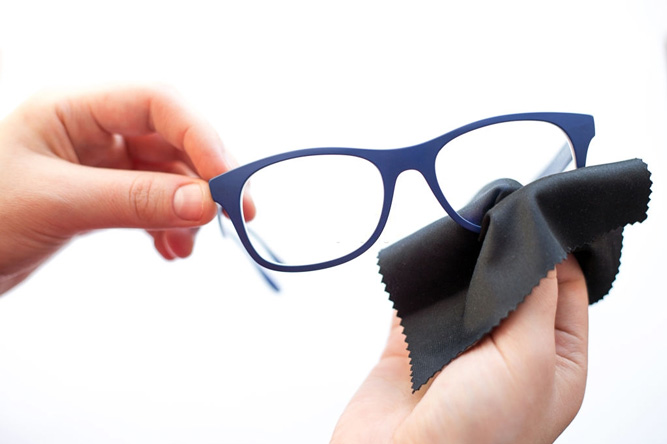
This easily affordable accessory effectively lifts off moisture and dirt. You can fold the cloth to put inside your eyewear case for a quick clean.
Get a soft fiber cloth made of high-quality textile so the lenses stay intact as you rub.
Pre-moistened wipes
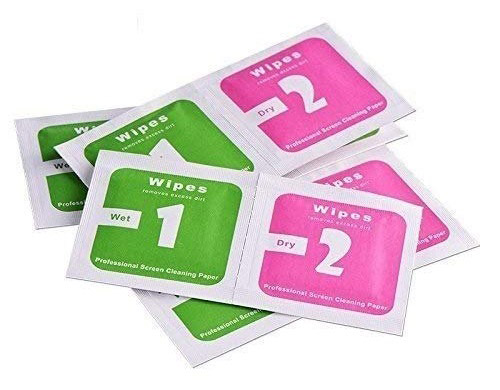
These wipes can help remove any grime, dirt, or oily smudges on your lenses with a simple sweep. You want to make sure the wipe is made with soft materials for gentle cleaning.
Get one that comes with a safe formula if your glasses have a special coating.
Vinegar
Vinegar is a great and hassle-free way to remove stains and smudges on safety glasses.
How to Clean Your Safety Glasses?
Step 1: Clean your hands
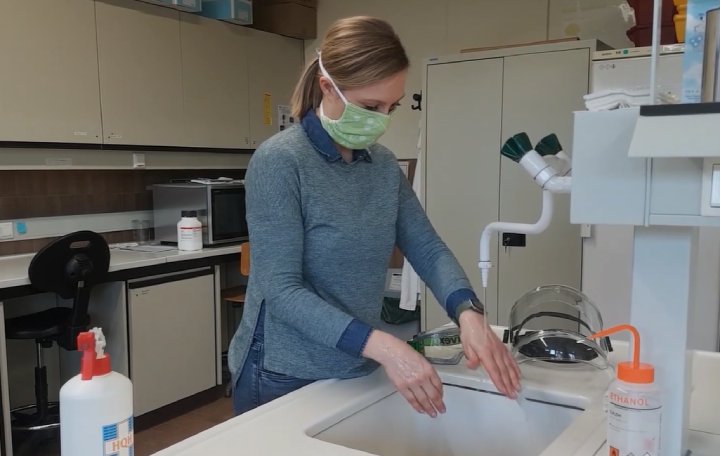
Carefully wash your hands before you take care of the safety glasses.
Make sure your hands don’t have any oil and dirt before you clean with a lint-free towel.
Step 2: Blow off loose dirt and debris
Lenses often trap loose dirt after work that’s large enough to remove with a blow.
Make sure the dirt is gone before you start cleaning so the lenses don’t get scratched.
Step 3: Rinse the safety glass under warm water
Prepare a bowl of warm water to rinse your glasses. Make sure the water isn’t too hot.
You can also rinse glasses under the tap water with some adjustments for a gentle and small stream.
Step 4: Use a cleaning agent to clean glasses
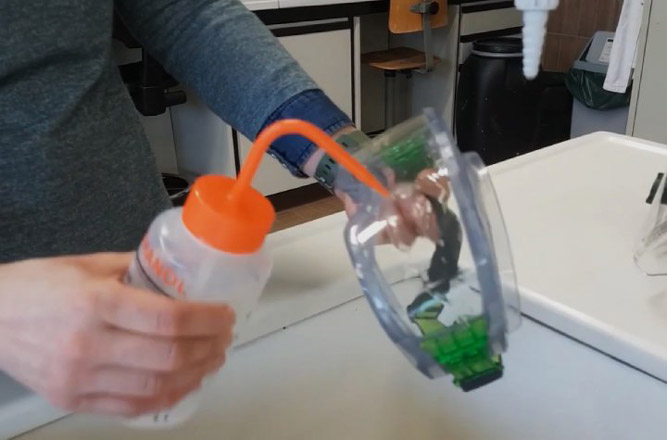
Spray the cleaner to lens surfaces and move them in a circular motion with a cleaning towel.
If you don’t have a towel handy, use your hands to polish the sprayed fluid on both sides of the lenses.
Some agents take 30 to 60 seconds to settle while others require you to clean the lenses with a soft and dry towel after rinsing the spray off. The streaks vanish when the agent settles so you can use your glasses again.
Read the instructions provided with the solution to do it right.
Step 5: Store your glasses
Wait for the glasses to dry off if you need to use them right after the cleanup.
If you do this at the end of the workday, don’t forget to put them in a clean and spotless pouch or closet.
Warning: The pair may trap dirt immediately when you place it on a table or inside your pocket. So be careful about that.
Things You Shouldn’t Do
Cleaning glasses the wrong way
If you tend to wipe your pairs off on your shirt or an old rag, you are doing it wrong.
Cleaning this way is the number one reason to cause scratches on your glasses while compromising the quality of the pair and your vision at the workplace.
Solvent and alcohol based products
Don’t use detergent, alcohol, or solvent-based cleaning products to clean your safety glasses.
Cleaning with saliva
Never clean lenses with your saliva.
Should You Clean Your Safety Glasses Before You Disinfect Them?
You need to clean the pair with cleaners to remove most of the contaminants.
Polycarbonate and plastic lenses tend to scratch easily, so be gentle when you clean and scrub them.
Make sure the water temperature doesn’t go below 110 degrees.
Why Disinfect Safety Glasses?
There is a chance of cross-contamination when different individuals use the same pair.
Flu, cold, or other germs can transmit through safety glasses. Bloodborne pathogens that carry viruses like AIDS or hepatitis can spread in the same way.
Bodily fluids are potentially infectious so you need to clean and disinfect safety glasses regularly to promote good health and hygiene practices.
These health hazards aren’t always visible so you need to be cautious.
Additional Tips
Include glass frames when you clean
Dirt and debris can collect both on the lenses and frames. Use a soft-bristle toothbrush the frames effectively.
Make sure you don’t graze the lenses with bristles.
Some fluid is essential for the cleaning job
A dry piece of cloth alone significantly increases changes for a scratch on the lenses.
Use some fluid to avoid this issue when you clean the eyewear.
Create a routine for the cleaning
Clean your glasses at the beginning or break of your shift.
You may have to spend more extra time cleaning the dirt if you wait until they become noticeable on the lenses. This can also increase the chances of a scratch.
Don’t forget your cleaning kit
It is important to have a cleaning kit with yourself all the time if your workplace lacks a cleaning station for safety glasses. The kit allows you to put the pair back into the tiptop condition in no time.
Your cleaning kit should include:
- Anti-fog solution
- A microfiber drawstring bag or protective hard case
- Wrong cleaner choices may erode the protective coating on safety glasses so don’t use window cleaners or other solutions that aren’t specifically made for the job
- A cleaning cloth that’s not made out of microfiber (abrasive fibers lead to scratches on lenses so avoid them)
Most cleaning kits are available for purchase under $15 and they last for a long time.
You may also want to get a retention strap so the glasses stay on your person when you don’t use them


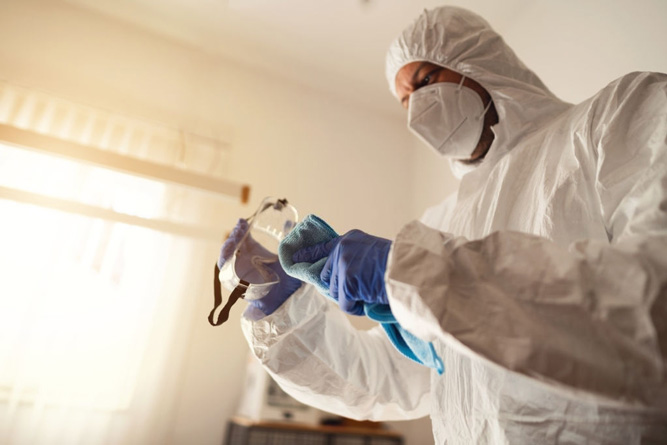





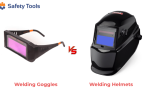

Leave a Comment